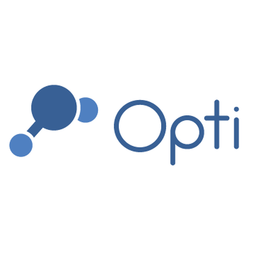下载PDF
Rainwater Harvesting System Minimizes Wet-Weather Discharge

技术
- 功能应用 - 远程监控系统
- 传感器 - 流量计
- 传感器 - 液位传感器
适用行业
- 城市与自治市
适用功能
- 商业运营
用例
- 智慧城市运营
挑战
USEPA 和总务管理局升级了 USEPA 总部现有的 6,000 加仑雨水收集系统,以尽量减少潮湿天气的排放,同时保持灌溉用水。
客户
美国环境保护署
关于客户
-
解决方案
OptiNimbus 被整合到雨水收集系统中,提供了在降雨事件发生前排放水所需的基于预测的逻辑。这为 USEPA 提供了最大限度地提高其雨水收集系统的环境效益的灵活性,并随着时间的推移计量、记录和监控蓄水池的输入和输出。用于雨水收集的 OptiNimbus 通过减少潮湿天气的排放和提供全年灌溉,改进了 USEPA 现有蓄水池的功能。 OptiNimbus 显着提高了雨水收集系统的投资回报率。
收集的数据
Water Flow Rate, Water Level, Water Meter Readings, Water Usage
运营影响
相关案例.

Case Study
Turning A Stadium Into A Smart Building
Honeywell created what it called the “intelligent system” for the National Stadium in Beijing, China, turning the venue for the opening and closing events at the 2008 Summer Olympics into a “smart building.” Designed by highly controversial artist Ai Weiwei, the “Bird’s Nest” remains one of the most impressive feats of stadium architecture in the world. The 250,000 square meter structure housed more than 100,000 athletes and spectators at a time. To accommodate such capacity, China turned to Honeywell’s EBI Integrated Building Management System to create an integrated “intelligent system” for improved building security, safety and energy efficiency.
.png)
Case Study
Smart Street Light Network (Copenhagen)
Key stakeholders are taking a comprehensive approach to rethinking smart city innovation. City leaders have collaborated through partnerships involving government, research institutions and solution providers. The Copenhagen Solutions Lab is one of the leading organizations at the forefront of this movement. By bringing together manufacturers with municipal buyers, the Copenhagen Solutions Lab has catalyzed the development and deployment of next-generation smart city innovations. Copenhagen is leveraging this unique approach to accelerate the implementation of smart city solutions. One of the primary focus areas is LED street lighting.

Case Study
Buoy Status Monitoring with LoRa
The Netherlands are well-known for their inland waterways, canals, sluices and of course port activities. The Dutch Ministry of Infrastructure indicates that there are thousands of buoys and fixed items in and near water environments that would profit from IoT monitoring. One of the problems with buoys for example, is that they get hit by ships and the anchor cable breaks. Without connectivity, it takes quite some time to find out that something has happened with that buoy. Not to mention the costs of renting a boat to go to the buoy to fix it. Another important issue, is that there is no real-time monitoring of the buoys at this moment. Only by physically visiting the object on the water, one gains insight in its status.

Case Study
China Mobile Smart Parking
Smart Parking, powered by NB-IoT technology, is making it easier for drivers to find free parking spots. Cities can better manage their parking assets and maximize the revenue available to them as a result. Drivers searching for parking create congestion and pollution by circling and hunting for available parking. Smart Parking services are able to significantly ease these problems by guiding a driver directly to a parking space.

Case Study
Barcelona Case Study
Barcelona’s heavy traffic and its associated high levels of pollution were the primary factors that motivated some companies and universities to work on strategies for improving traffic in the city centre. Bitcarrier is one of the technologies involved in the In4Mo Project, whose main objective is to develop the applications that form the core of smart mobility, one of the fundamental pillars of the smart city concept.






